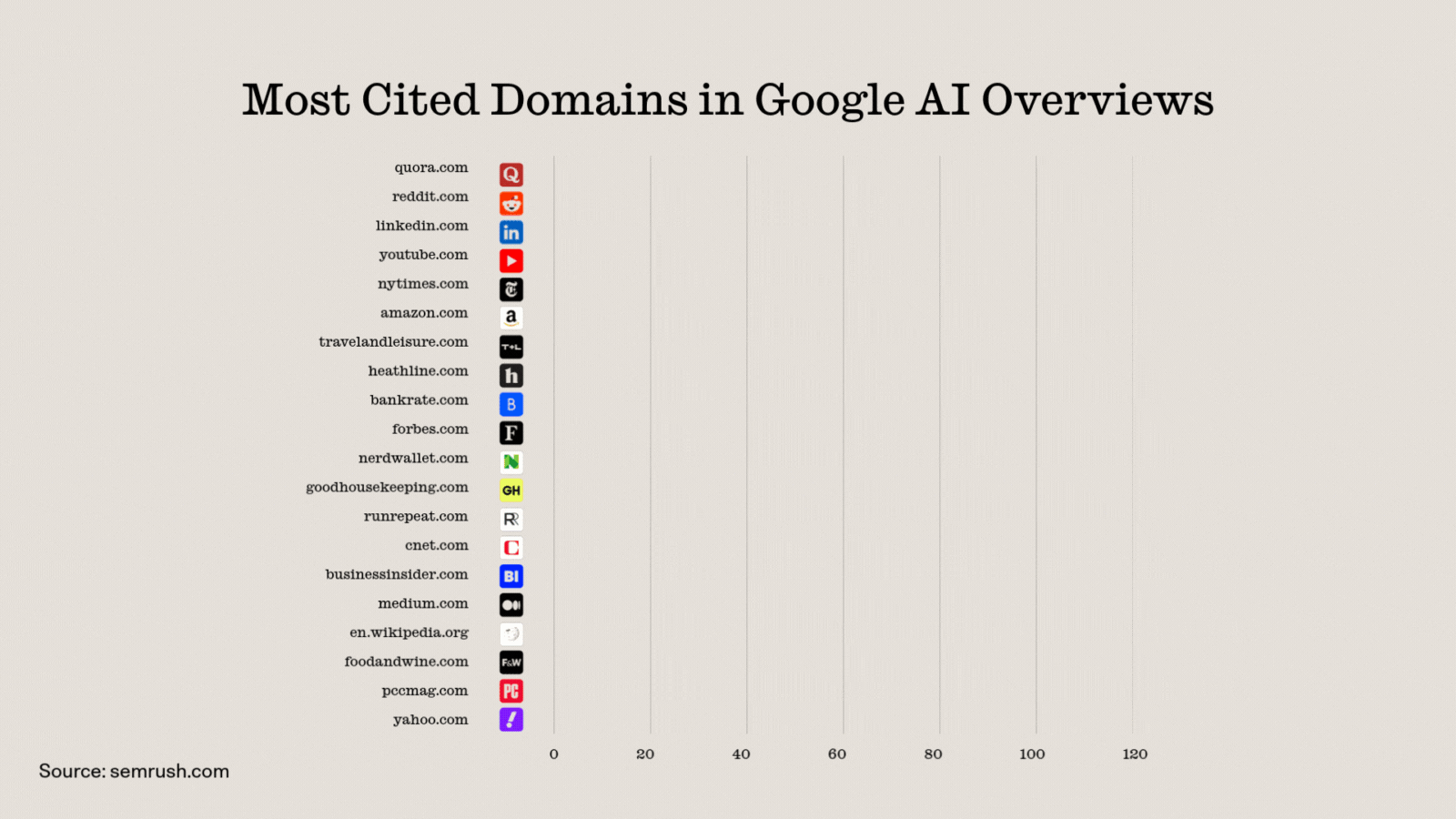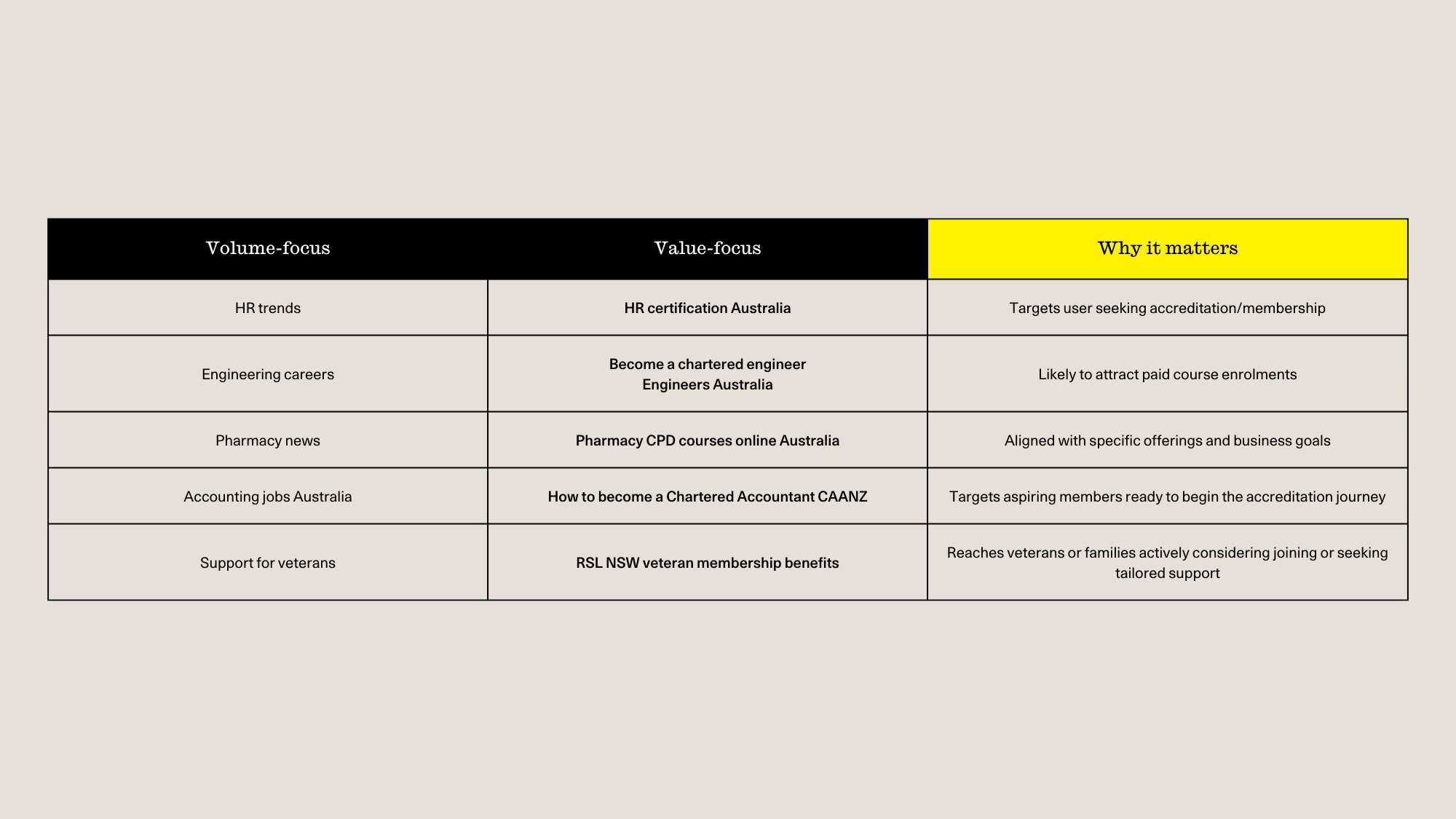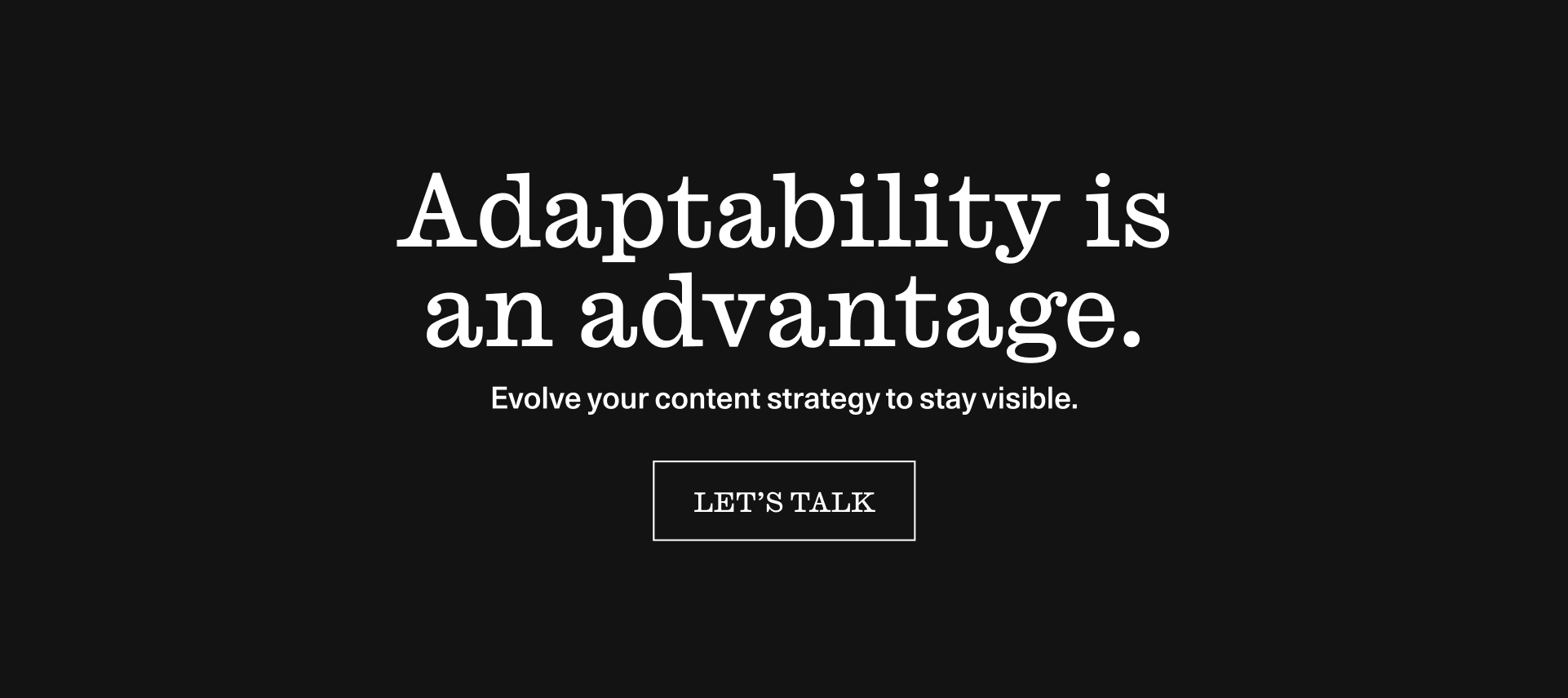
Your content strategy isn’t broken. But AI is rewriting the rules.
A top-five ranking on Google was once enough to get noticed by your potential customers and clients. But today, the fight for attention is tougher than ever.
By 2028, organic search traffic is expected to drop by 50%, and almost 60% of Google searches already end without a click. Social platforms are now search engines in their own right, with 67% of users turning to social search during their purchase journey. At the same time, more brands are producing more content, competing for the same finite attention.
Google isn’t going anywhere, but the path from search to your website is no longer a straight line. Increasingly, it ends with an AI-generated answer or a TikTok review. When your audience encounters you in ChatGPT, Google’s AI Overview or on social media, they’re getting a filtered, summarised version of your story from sources you may not choose or control.
The old playbook for earning visibility isn’t enough. Without a strategy that reflects how audiences now find and trust information, your brand’s story risks being told without you.
AI has changed the terms of visibility
AI search models aren’t just indexing the web; they’re interpreting it. They decide what to show, where to source it, and how to present it.
For brands, that means:
- Your most valuable audience may only reach your site at the point of conversion, with their opinions already shaped by information you don’t control.
- Authority matters more than volume. Half the links cited in ChatGPT responses come from business- or service-owned websites, but only if they’re authoritative, clearly structured and aligned to what people are asking.
- Reputation is more exposed. Negative commentary about your brand can be surfaced, stripped of context, and presented as fact.
These shifts bring challenges but also opportunities. Ninety per cent of ChatGPT queries cite pages ranked 21 or lower in Google results, meaning you can appear in AI answers even without a coveted page-one ranking. And when you do, there’s more upside: AI-search visitors convert at 4.4 times the rate of traditional organic visitors.

From content strategy to content systems
Bringing your content strategy into the AI era doesn’t mean abandoning traditional search principles. Google's own EEAT model — ensuring you are demonstrating Experience, Expertise, Authoritativeness and Trustworthiness in your content – still rings true.
What’s different is the need to think in systems, not silos. A content system considers the full ecosystem where your expertise appears — owned channels, search results, AI summaries, social platforms, forums and media coverage — and how each reinforces the others to build visibility and trust.
These shifts can help you make that system work for you:
1. Treat AI as a distribution channel, not a threat
Like search engines before them, AI platforms need to be understood, influenced and integrated into your distribution strategy. The goal isn’t just to appear in answers. It’s to be the source those answers trust.
2. Shift from keywords to key phrases
People don’t talk to ChatGPT or voice search the way they type into Google. Instead of short, generic terms, they use conversational, context-rich queries. Optimise for the natural language your audience uses to align with how AI platforms interpret and serve information.
3. Be visible beyond your own channels
AI models learn from and cite platforms like Reddit, LinkedIn, Quora and Medium. Maintaining an active, credible presence on these channels helps ensure your expertise is captured and gives you greater control over the narrative.

4. Safeguard your reputation in the public domain
In an AI-mediated world, unmanaged negative sentiment can be surfaced and presented as fact, without context. Monitor online mentions across channels like review sites, social platforms and industry forums. Respond quickly and constructively to feedback, correct inaccuracies, and proactively work the balance towards positive, authoritative narratives.
5. Make visibility impactful
Rather than getting caught up in ranking for top keywords for volume without strategic payoff, focus on the niche topics and search terms that align with your market positioning, attract high-intent audiences and directly support your business goals, even if the raw traffic numbers are smaller.

6. Build and protect your owned audience
When platforms control distribution, first-party data is your insurance policy. Email subscribers are 10x more engaged than social followers, making your database one of your most valuable assets. Invest in growing and nurturing it through valuable, consistent content such as newsletters or gated tools.
Content’s new job description
The zero-click trend isn’t a death knell for content. It’s a revitalisation. Content in the AI era must:
- Be findable by both people and AI algorithms.
- Be memorable enough to be cited, shared and linked.
- Be valuable to the exact audience you’re trying to reach, even if they never land on your site.
If AI is answering your audience’s questions, your job is to make sure it cites you as the authority. Building your content system now to feed the right signals into AI platforms, build authority across channels, and prioritise depth over volume will keep you visible as the rules continue to evolve.
And they will evolve. The brands that bake adaptability into their content systems will be the ones that protect and grow their visibility.
